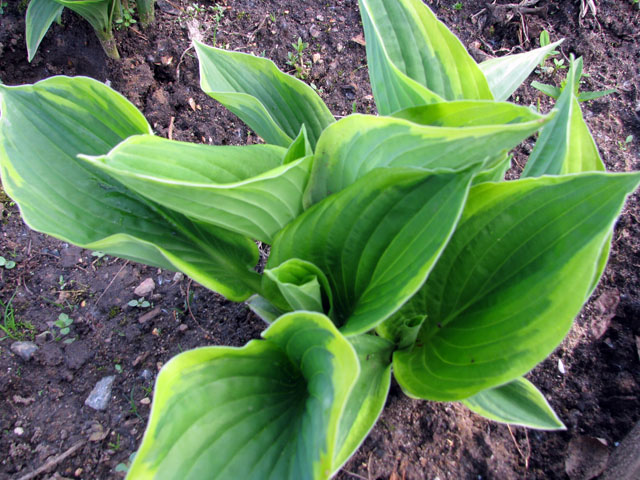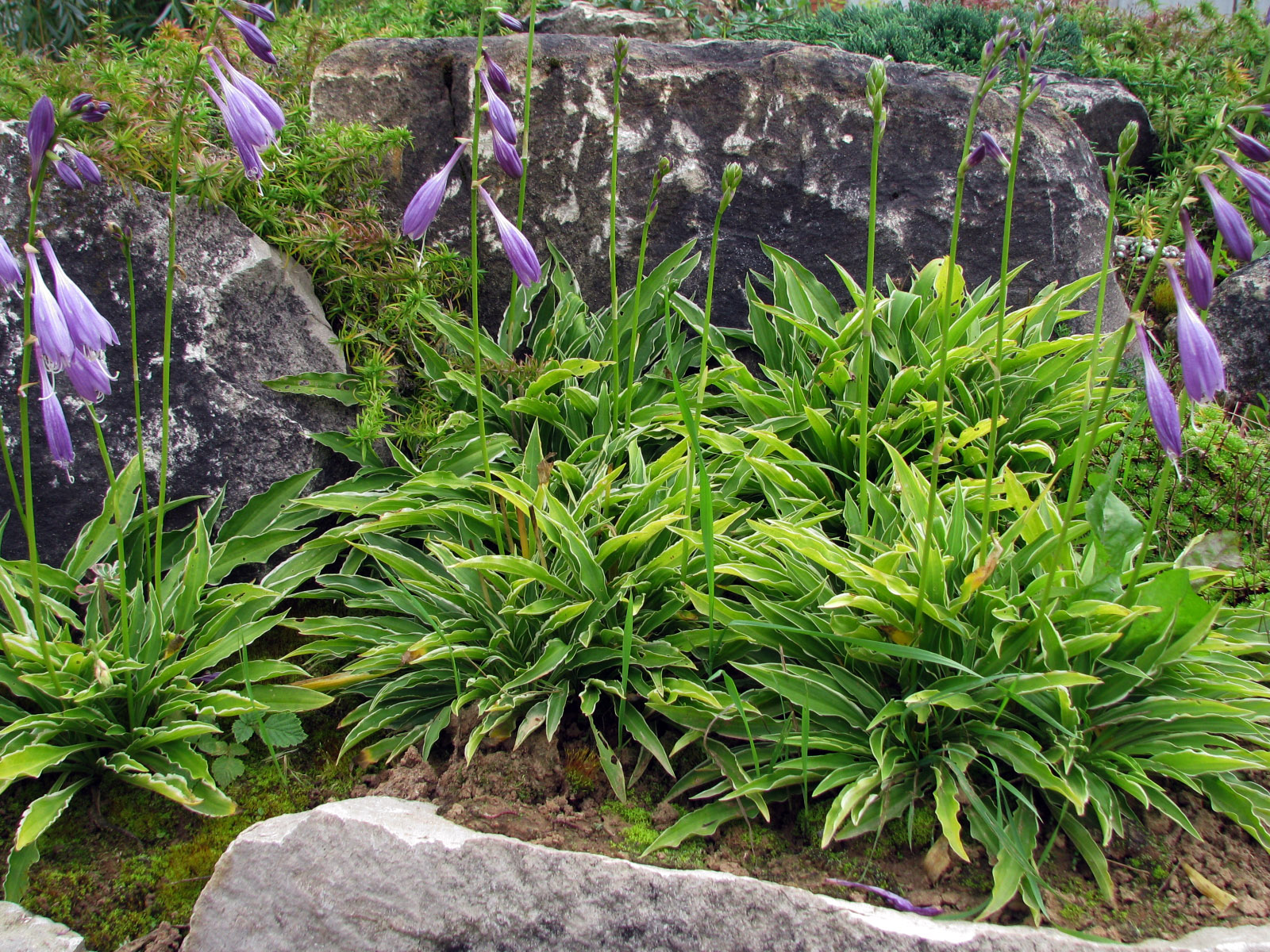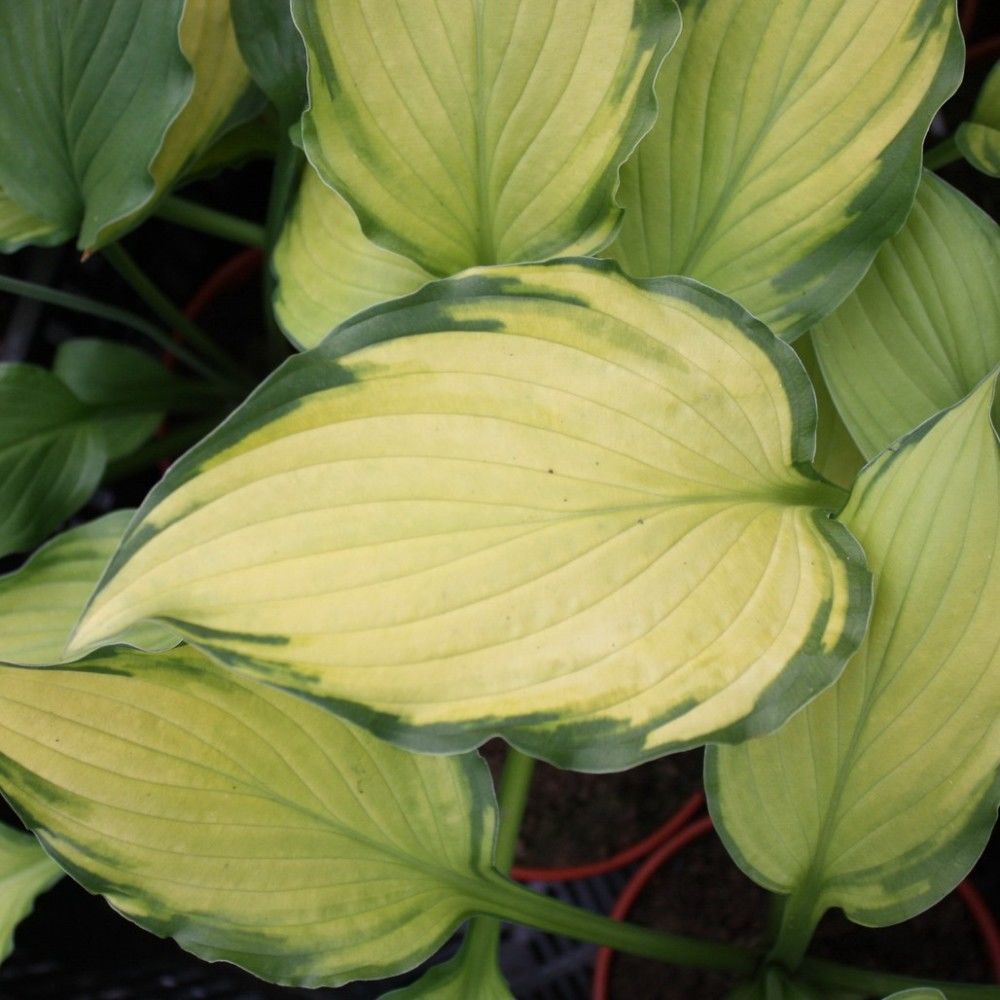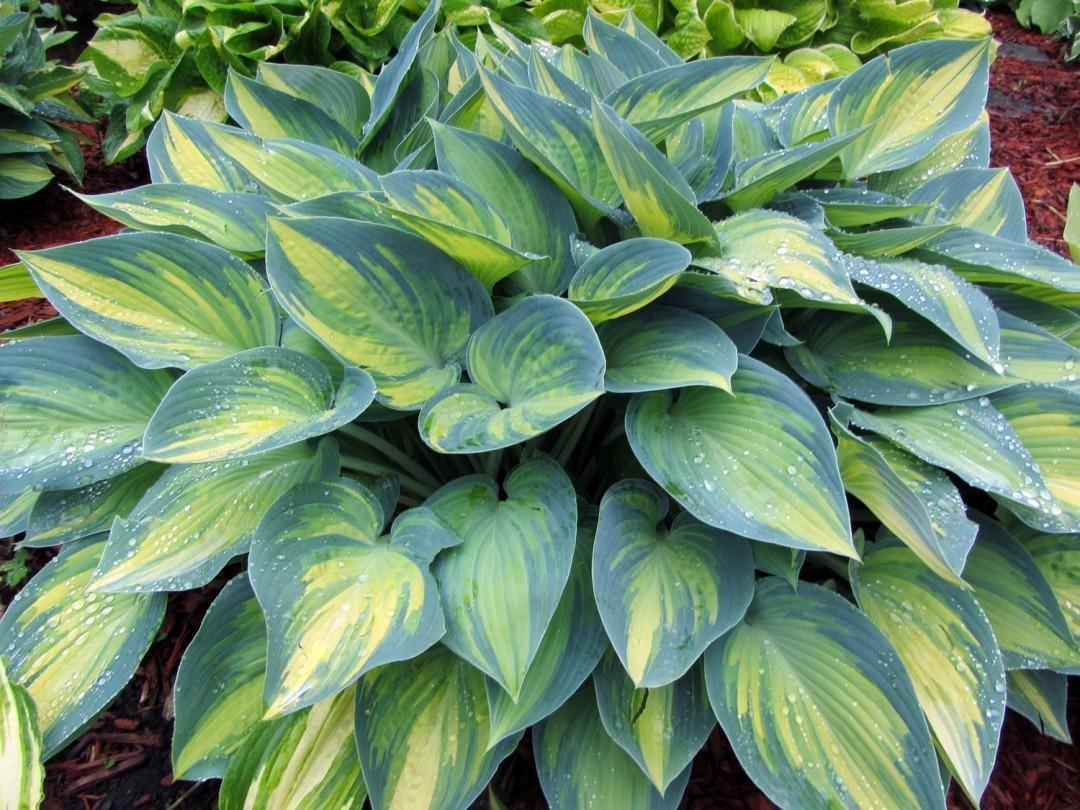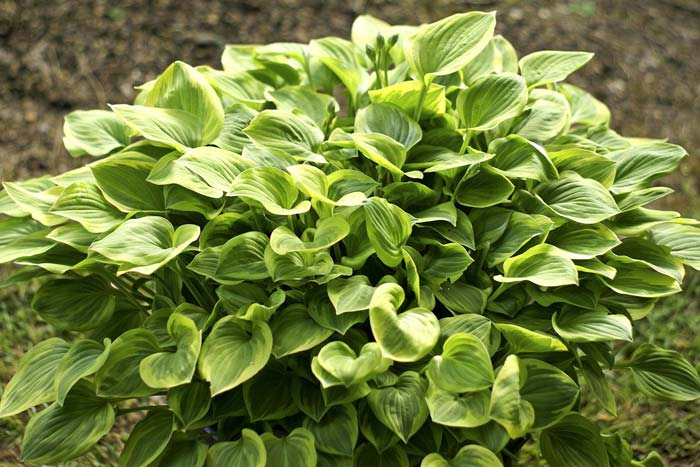Content:
Hosta is a plant that is used in garden plots for landscaping and decoration of the territory. The first name of this plant was function. Summer residents prefer to grow this genus of plants on their site because it tolerates shade well, and is not picky about care. The plant got its name in honor of the Austrian Nikolaus Host, who was a doctor and part-time botanist. Prior to this, the name of the function was given in honor of the German scientist Henrik Funk.
Description and characteristics of the plant
The host in the garden is a plant that has been growing for many years. This genus belongs to herbaceous plants and has a not very branched root system. The leaves grow directly from the basal rosette on the petioles and, depending on the species, have a specific shape: from narrow lanceolate to broadly ovate. They also differ in color. It is very common to find hostu with variegated leaves.
The inflorescence on the plant grows in the form of a brush, which has flowers in the form of bells or funnels. They are painted lilac, purple or white. Ripe fruits are in a box and look flat with wings, painted black.
Types and varieties
In nature today there is a large number of hosta varieties and species of which number at least 2,500. At the same time, gardeners are most often attracted by that hybrid host, whose leaves are multi-colored. It is them that summer residents buy in the market or in flower shops in order to decorate the landscape design of their site with it. A hybrid hosta differs from an ordinary one in that its bush grows much larger in diameter and the leaves are larger.
In the host variety, varieties and species have leaves of completely different colors, so it happens:
- yellow host;
- hosta white;
- golden;
- blue;
- gray;
- two-color hosts;
- one-color;
- with stripes;
- with contrasting border.
Now you can find tricolor leaves on the hosta. The color of the leaves depends entirely on the type of plant.
These host types:
- Medusa;
- Cafypsa;
- Ckortreuse Wiggles.
Hostas, which have large leaves and long petioles, are not bypassed, namely:
- Sea Gold Star;
- Green Fontain.
These plants resemble fountains. Breeding of this culture is still being worked on at the University of Michigan. Breeders are trying to develop a plant that will have hosta foliage and a daylily flower. Such copies are very expensive and not everyone can afford.
In nurseries around the world, there are at least a dozen host varieties, as well as about four hundred hybrid host varieties.
Here you can see plants with foliage colors:
- gray-green;
- blue;
- green;
- golden with white edging;
- golden;
- green-blue with a white border;
- white or gold with a bluish-green border;
- white or blue with a golden border.
There are hosta with leaves covered with spots or streaks, yellowing, greening, whitening shades.
In addition, plants of different sizes grow here:
- Dwarf plants that grow no more than 10 centimeters;
- Small in size, the height of which reaches no more than 20 centimeters;
- Plants of medium height grow up to 30 centimeters;
- Large hosts grow up to 45 centimeters in height;
- Giant plants grow more than half a meter tall.
The host grows in the shade. Despite the fact that under these conditions its growth slows down, the plant itself becomes large and tall. Of all the plant species, more attention should be paid to the following varieties.
Stiletto
Refers to miniature plant species. The leaves of the plant are green with a light yellow border. It blooms in purple. It looks very impressive on the nursery.
Golden Tiara
It is a plant from low host species. It has green leaves with a golden heart-shaped border. The flowers are purple. It looks very beautiful among other plants.
Veronica Lake
A small hosta with bluish green leaves with a yellow border. It blooms with bells of pink-lilac color.
Jurassik Park
Large hosta with bluish-green wrinkled leaves. It grows at least one meter in height. It blooms with light purple flowers.
Lady Guinevere
Or, more simply, Ginever. The plant grows to a height of no more than 60 centimeters. Her flowers are funnel-shaped, of different shades. The plant is shade-loving, so it should grow in the shade.
Lemon Miracle
This is the novelty of the season. She has delicate yellow flowers that look like a lily. The leaves look like ripe lime.
Landing
To admire the beauty of this plant, you must properly plant it in open ground. This is done in early spring, even before the first leaves appear. You can also plant the hosta in the fall, between late August and early September. This must be done so that the root system has time to take root and begin to develop. Only in this case will the plant be able to overwinter.
If you want to have a host, you need to know where to plant it. The plant is planted in the shade if it has solid green leaves.
The disembarkation process is as follows:
- A wide hole is dug under the root system. This is necessary because the root of the plant grows and develops in a horizontal position. At the same time, the depth of this pit must be at least thirty centimeters;
- At the bottom of the pit, you need to put compost, rotted manure, peat and a small layer of sand. In the event that the soil is acidic, you need to pour a little ash;
- All fertilizer is mixed and filled with water;
- The roots of the plant must be carefully spread and sprinkled with a layer of soil. Thoroughly pour water over the surface;
- After that, the surface is mulched.
Care
Do not think that different varieties and types of hosts require special care. Still, for the host to feel good on your site, she needs to be looked after. It should be borne in mind that this plant is not very whimsical. He only needs moist soil.
Watering
Water the plant in a timely manner. It especially loves an evening shower. But it should also be remembered that the soil should not be too wet, otherwise the root system will begin to rot.
Top dressing
It is necessary to feed the plant three times per season. At the same time, organic and mineral fertilizers alternate. They are brought in in early spring, during the flowering of the plant and after it has faded.
Loosening
When loosening the soil, you must try not to deepen the tool too much into the ground, as you can damage the roots of the plant.
Reproduction
Hosta reproduces in three ways:
- Seed;
- By cuttings;
- By dividing the bush.
The most common breeding method for a host is by dividing the bush. Do it in early spring or late summer and early autumn. Divide the bush with a pitchfork, shovel or knife. This is best done with a pitchfork, so the root system gets less trauma than the other two methods of dividing.It is not recommended to dig out the bush completely. The part that will be transplanted is enough. The void at the excavation site must be filled with a mixture of fertilizers, peat and sand.
In this case, they must be placed in a greenhouse or in a shaded place under the bottle. Soon they will take root and begin to grow. At the same time, the leaves must be cut off from the cuttings so that the plant takes root faster.
Seed host is difficult to grow because not all plants set seeds. At the same time, there are no guarantees that a varietal plant will grow from seeds. The seed is sown in late autumn, and the hosta in the pot develops and grows very slowly. Hosta seedlings are planted in early spring.
Disease Treatment and Pest Control
Hosts are probably the only plants that don't get sick. But they have one enemy - a slug. This pest loves to eat young hosta leaves. To protect the "beauty" from this pest, you need to go to the trick and make mulching with caustic material.
Suitable for this:
- Wood chips;
- Crushed stone;
- Shredded shell rock;
- Needles.
The slug doesn't like to walk on such surfaces.
Preparing for winter
When preparing hosts for winter, you need to apply fertilizer under the bush in early August. After this period, the plant cannot be revitalized. After that, mulching is done with sawdust, peat and dry humus to protect the roots from freezing. At the same time, tobacco dust is added to the mulch so that pests do not eat the plant.
Opinions differ regarding the pruning of leaves before wintering. Experienced gardeners recommend this procedure to protect the plant from the invasion of snails and slugs. Summer residents who planted a plant for the first time do not have such experience and therefore refrain from circumcision so as not to harm the plant.
At the last stage of preparing the host for the winter, there is a shelter for her. The plant is covered with natural material, without the use of film, roofing material or other materials. It will be enough to put brushwood, twigs or spruce branches on the bush.
Hosta is a plant that requires little maintenance other than timely watering and enjoys being in the shade. In order for this plant to show off on the site, you need to adhere to these rules, and a wonderful perennial herbal plant will smell pleasantly in your garden.

